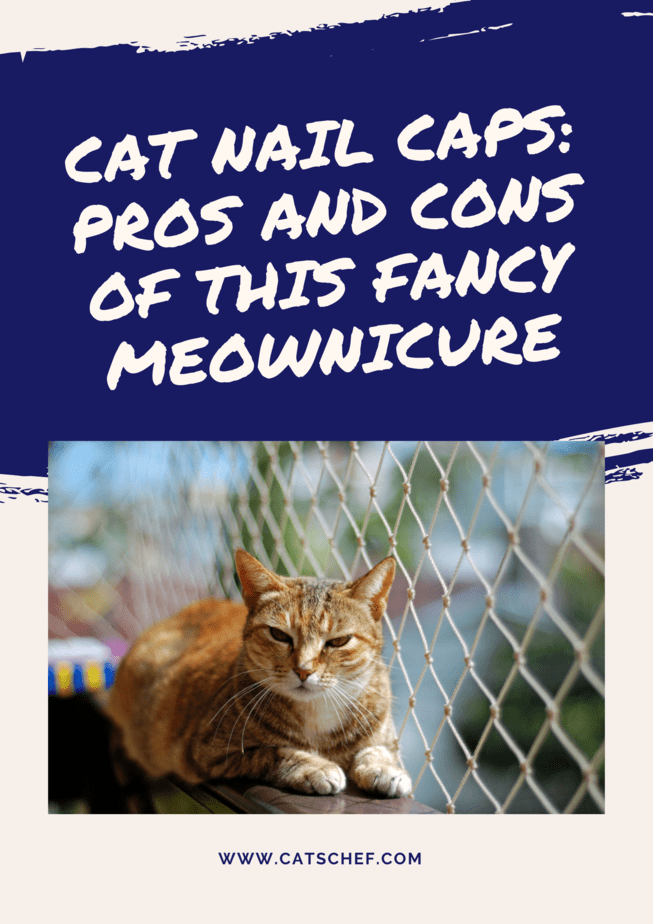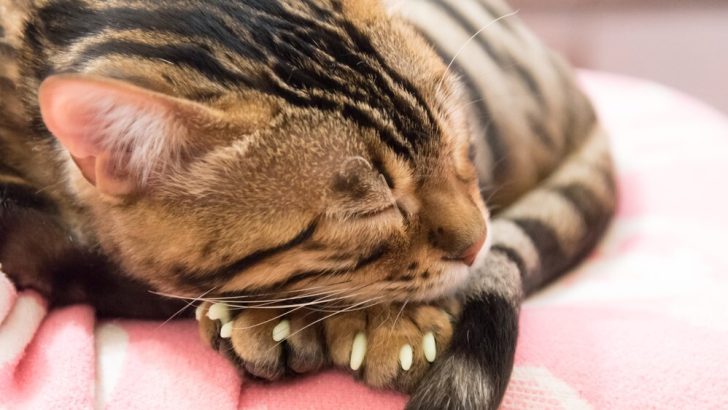The other day one girl in her early twenties entered our pet shop. She was kind of stressed out and apparently looking for something. I wasn’t sure if I should approach her, but then she came to the counter and said: “I’m sorry, I need to know everything about cat nail caps, both pros and cons. Please.”
Once she calmed down a bit, she explained that her parents want to kick out her fluffy friend because he was scratching everything he lays paws on. She loves him a lot and literally can’t manage her life without him.
So, she needed to think of something. She googled a lot and found out about cat nail caps. She also knew quite a lot about declawing, shortening, and other alternatives, but these covers looked like the safest choice.
Since she still wasn’t completely sure if these are the best choice, she dropped by to ask for advice. Of course, I helped her. I mean, it feels like yesterday when I was using cat nail caps on Nora’s claws to teach her a couple of things.
If you want to learn more about cat nail caps and find out all pros and cons of using them. I’ll explain it all in a bit.
What are cat nail caps?
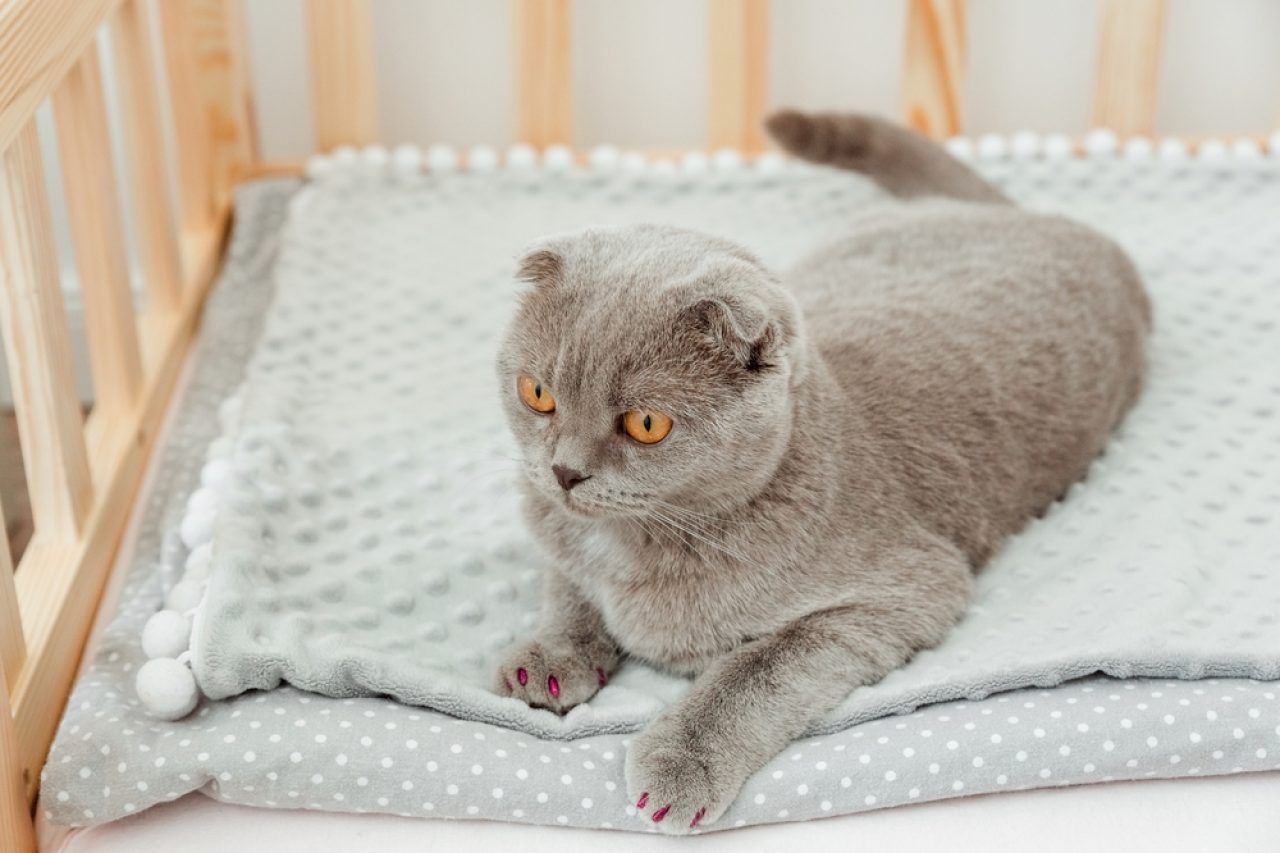
First things first, we have to clear up what are actually cat nail caps. Have you heard about them before? It is completely fine if you haven’t.
So, basically, those are covers for your cat’s nails, that are usually made of rubber, plastic, or vinyl. Another important thing to mention is that they are rounded and soft, and well, they prevent your fluff from scratching.
We use special glue to attach them to our feline’s nails and they fall off in four to six weeks. During that time, the cat’s nails are naturally peeling, so they are removed with the outer layer of the nail.
It’s pretty easy to apply them and you can learn to do that on your own. There are also a lot of pet groomers and vets who’ll gladly do it for you. As soon as cats turn 4 months old, they can wear these nail caps, since they come in various sizes.
Yes, they are kitten friendly and what’s more important, they are an amazing substitution for the extremely painful declawing process. You can put them on both front and back paws and your cat will be grateful for not going to the surgery.
Cat nail caps: Pros and cons
I assume that you’ve heard a lot about cat nail caps by now, so in this part, I’ll list all the pros and cons of applying them. Of course, we’ll start with the pros. Buckle up!
1. Your furniture and curtains are safe
Even if you’re a first-time pet owner, you know that cats scratch a lot with their claws. Kittens do it excessively while they’re still learning what they’re capable of. In the process of growing up, they may ruin something in your home – your furniture, carpets, curtains, and even clothes.
Therefore, I’ll list this as the first pro of applying cat nail caps.
2. There are no accidental injuries or scratches anymore
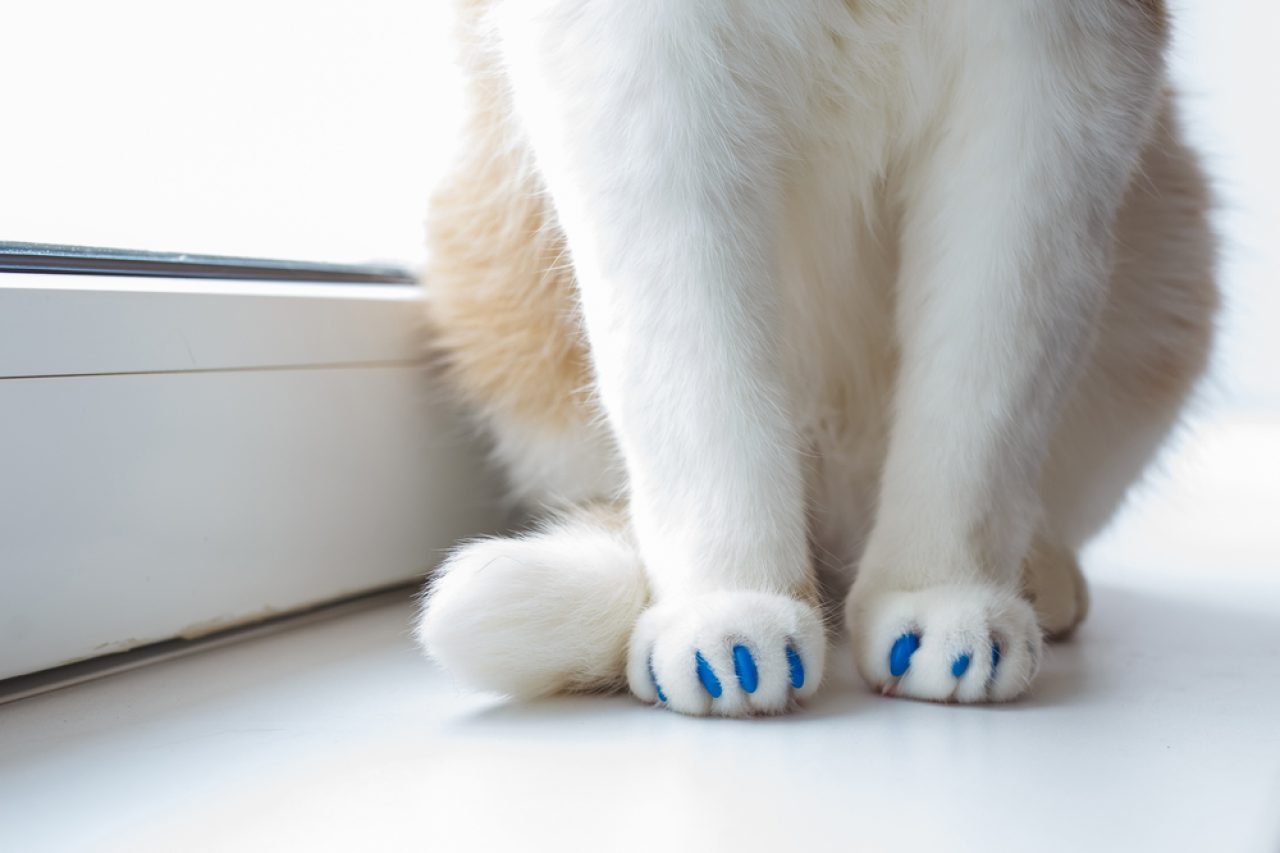
I don’t have to mention that your fluff may playfully scratch you, too. I’m sure you know many cat owners who are constantly reassuring you that those marks on their hands and arms are from their furbabies.
Whether your fluff has cattitude or she unintentionally scratched you, another benefit of cat nail caps is that you’ll be safer. As soon as you apply these to your feline’s claws, you can forget about the scratching accidents. Your family members will be grateful, too.
3. They’re not expensive
Well, compared to other possible solutions for your fluff’s excessive scratching, cat nail caps are less expensive. If you learn to put them on your own, it’s even cheaper. I mean, professional trimming of your cat’s claws or declawing is either expensive or inhumane.
So, why wouldn’t you choose this option in the end? And bonus points go to the fact that you can choose different colors, too. Pick shiny or regular ones, and make it really interesting for both of you!
4. They’re helpful while you’re training your kitty to use a scratching post
Perhaps your kitty is still learning how to use a scratching post. You can add this advantage to the list of cat nail caps’ pros and cons. They will be great protection for your living space until your feline learns that she can only scratch one place in the house.
5. Claws can grow normally
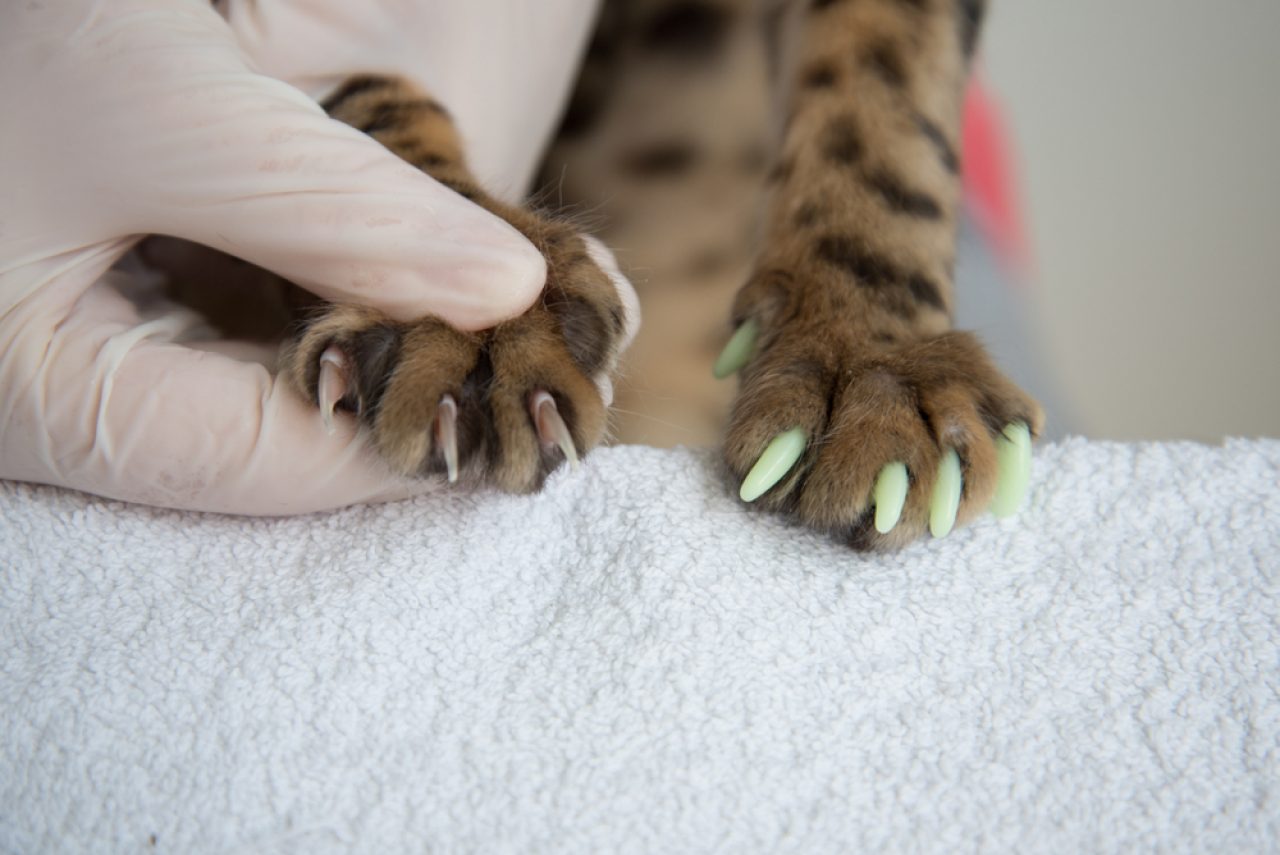
One of the most important reasons why you can start using nail caps is that your cat’s claws will grow normally regardless. Your cat’s claws are growing in layers and as they grow, the outer layer loses the nutrients and falls off.
In fact, cats are scratching a lot to remove that dead nail part. That reveals a sharper and healthier claw. Putting nail caps on top won’t affect that process. In fact, these fall off with the top layer and will need a replacement.
6. You can stop using them whenever you want
Once you put them on your cat’s claws, don’t worry that you won’t be able to take them off. You can do that when you wish to do so. There’s no time limit on how long cat nail caps should be on. The only thing that you have to keep in mind is that you’ll have to change them every 4-6 weeks.
Even if your fluff didn’t need them for some time and now you think that it’d be better if she wore them again. You can easily start again if you’ve already trained your fluff.
7. There’s no risk of infection (if applied properly)
Poor application of nail caps may cause irritations and in some extreme cases even infection. Pay attention that they are not causing discomfort or hurting the nail bed. Those are the most common problems your feline can have. But, if applied properly, there shouldn’t be any problems.
8. A better alternative to declawing
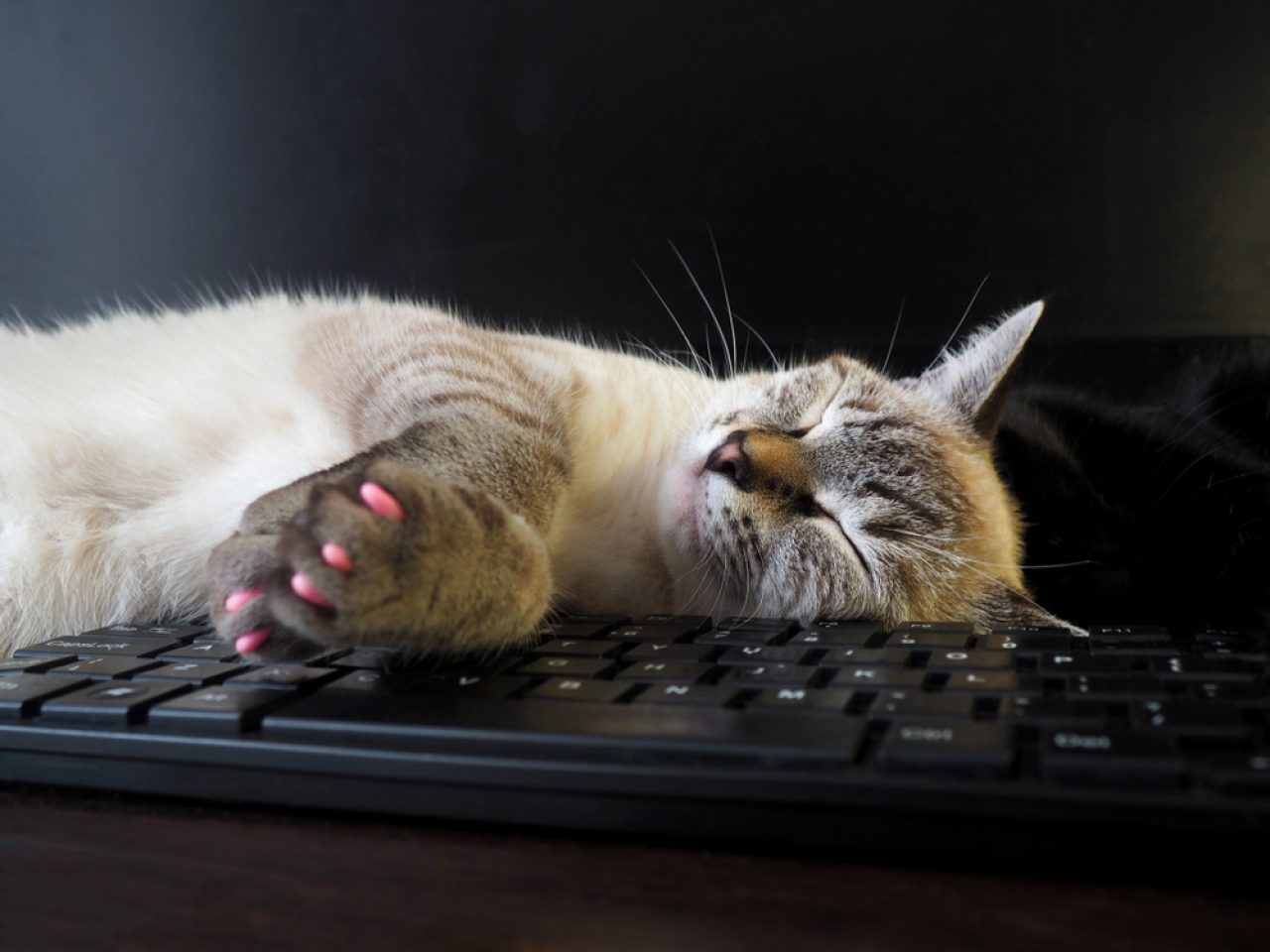
Using claw covers is definitely a better alternative to declawing. Of course, it’s not permanent because you’ll need to replace them from time to time. However, it’s still an amazing option if you want to control your cat’s scratching habits.
Declawing or onychectomy is an extremely painful process that your fluff has to go through. Contrary to the popular belief, it doesn’t mean only cutting her claws. It actually means that a part of your cat’s paw will be amputated and many countries actually banned this surgical procedure.
So, if you want to prevent your cat from scratching furniture, rather use nail caps than declawing. It’s way less painful, has no serious consequences and it’s easy to do it.
After going through the pros for your cat’s meownicure, it’s time to list some cons. So, let’s do it.
9. They need regular replacement
As I’ve previously mentioned in some parts these covers need regular replacement. That’s the first negative thing on the list of cat nail caps’ pros and cons. You’ll need to change them every 4-6 weeks since your cat’s nails are growing all the time.
Besides this, you may need to replace some caps individually. If you learn how to apply them on your own, you’ll definitely save some money.
10. They can be severe stressors
For all of the felines who never wore cat nail caps, they will be pretty disturbing in the beginning. Or rather not disturbing, but different. For others, that adjusting period may never pass and they may be constantly stressed out.
If you notice that nail caps are severe stressors for your fluff, remove them immediately.
11. Your cat may walk a bit oddly
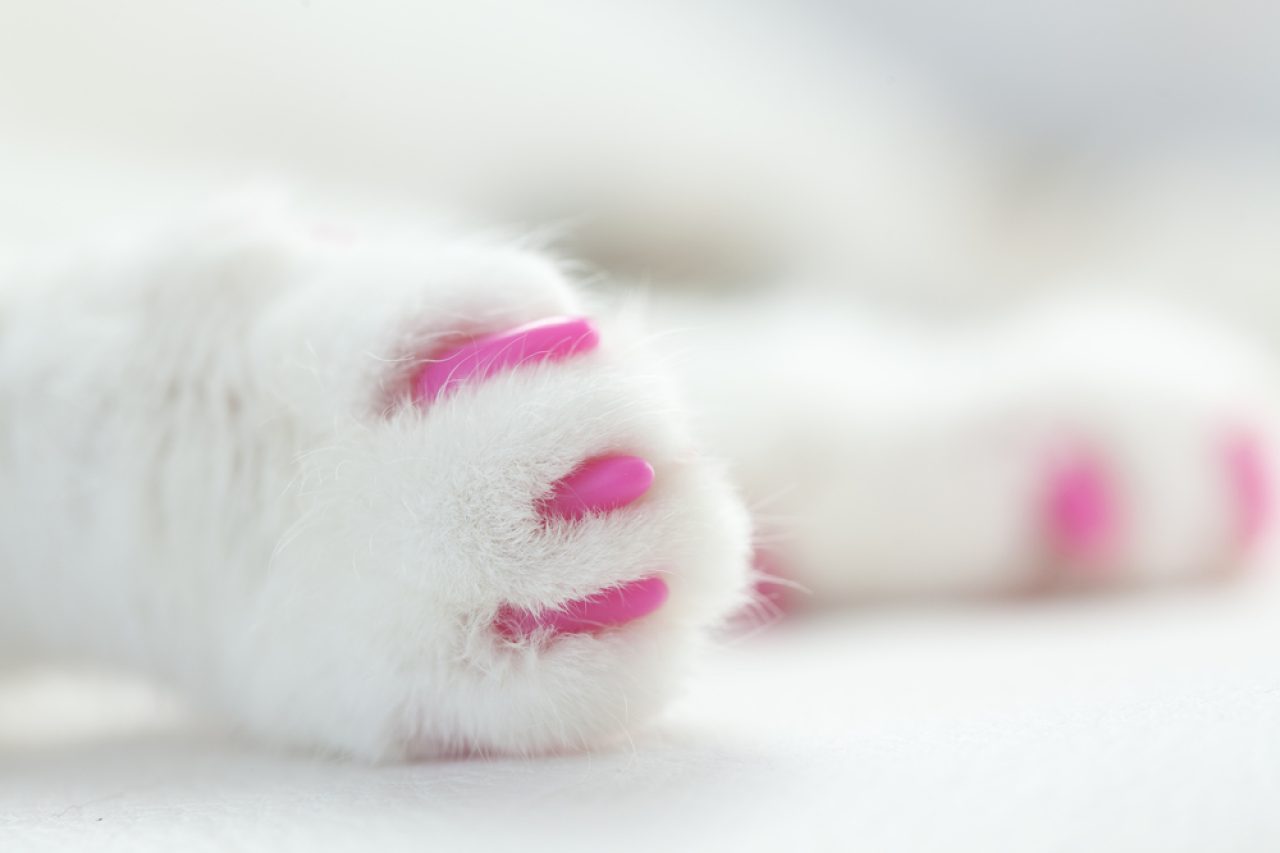
Unfortunately, yes, your cat may walk a bit oddly when you apply nail caps for the first time. Eventually, most fluffs get used to them, others fail to do so. Since there’s a foreign object around their nails, it may be a struggle to walk like that.
12. She can only stay indoors if she’s wearing caps
Another negative thing about nail caps is that your furball has to stay inside if she’s wearing them. This is because her claws are her main weapon when in the wilderness. If she can’t use them, she’d be extremely vulnerable.
She won’t be able to defend herself if a predator or any other threat shows up. Therefore, cat nail caps are not recommended for fluffs that go outside. Of course, you can take her out on a leash, or let her get out in her protected catio where she’ll be safe.
13. Putting cat nail caps may be messy
Cat’s paws are highly sensitive, and once you start messing with them, she may start scratching and fighting back. Since you need to use glue to attach them properly, you may spill it in the process as well.
The best thing would be if you could prepare your cat beforehand. Try touching her paws days before you decide to put on nail caps. That way she may get used to your touch and it will be a bit easier to attach them when the right time comes.
14. Some felines can ingest nail caps
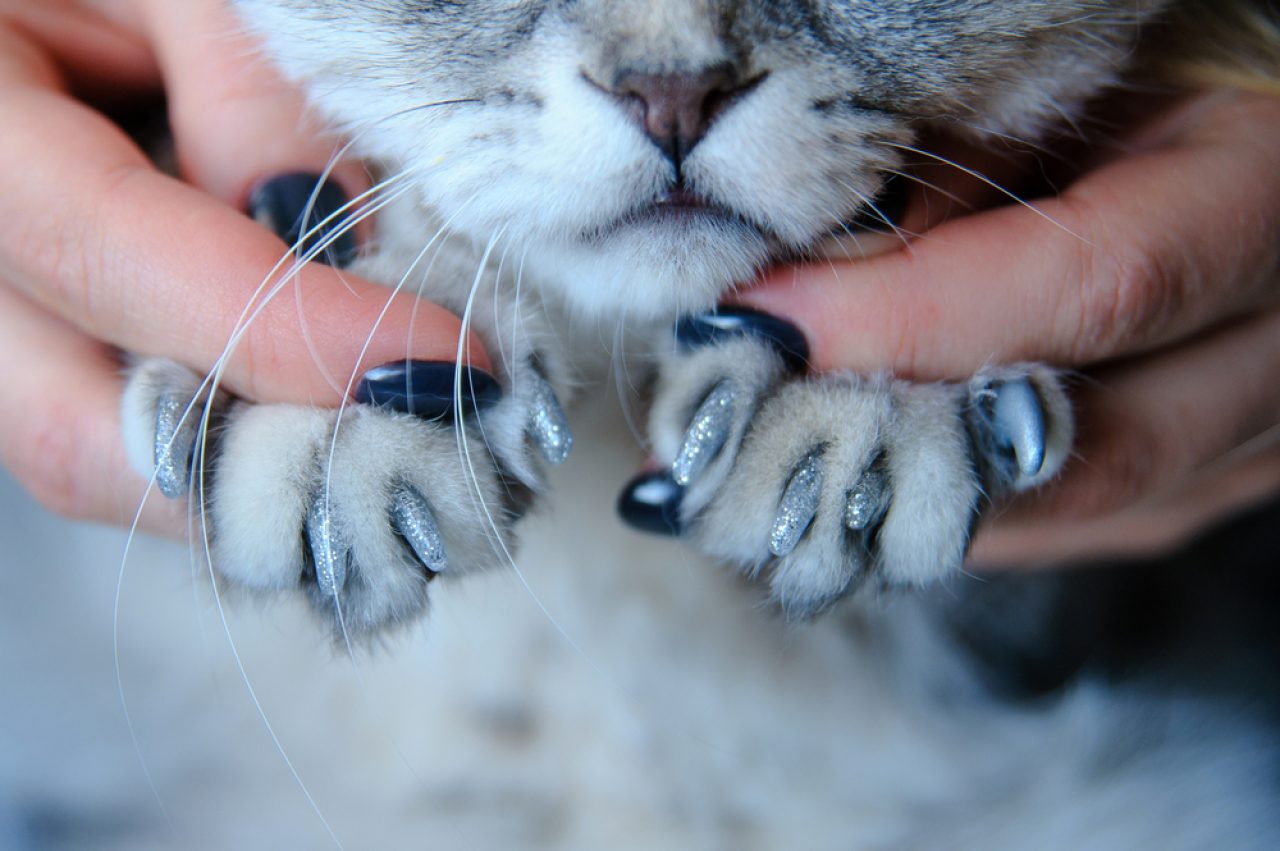
This is one of the scariest cons, but it still isn’t something that should completely disinterest you in using nail caps for your cat. Because it’s uncomfortable for them, some cats will try to bite the nail caps off. If they manage to do so, they’ll probably start chewing them and may ingest them too.
As soon as you notice that this happened, don’t hesitate to take your feline to the vet. Also, monitor her in case she may have indigestion or some other problems with her digestive system.
15. They can mess up her ability to climb
What do cats use to climb and have a better grip? Their claws, of course. Once you apply nail caps on your feline’s claws, she may struggle a bit with activities like running, jumping, and climbing. They mostly rely on their nails for additional stability and security.
16. They’re not biodegradable
We’ll finish this list of the pros and cons of cat nail caps with one fact for all environmental enthusiasts out there. They are mostly made out of plastic, vinyl, or rubber and neither of those materials is completely biodegradable.
How to put cat nail caps on a cat’s claws?
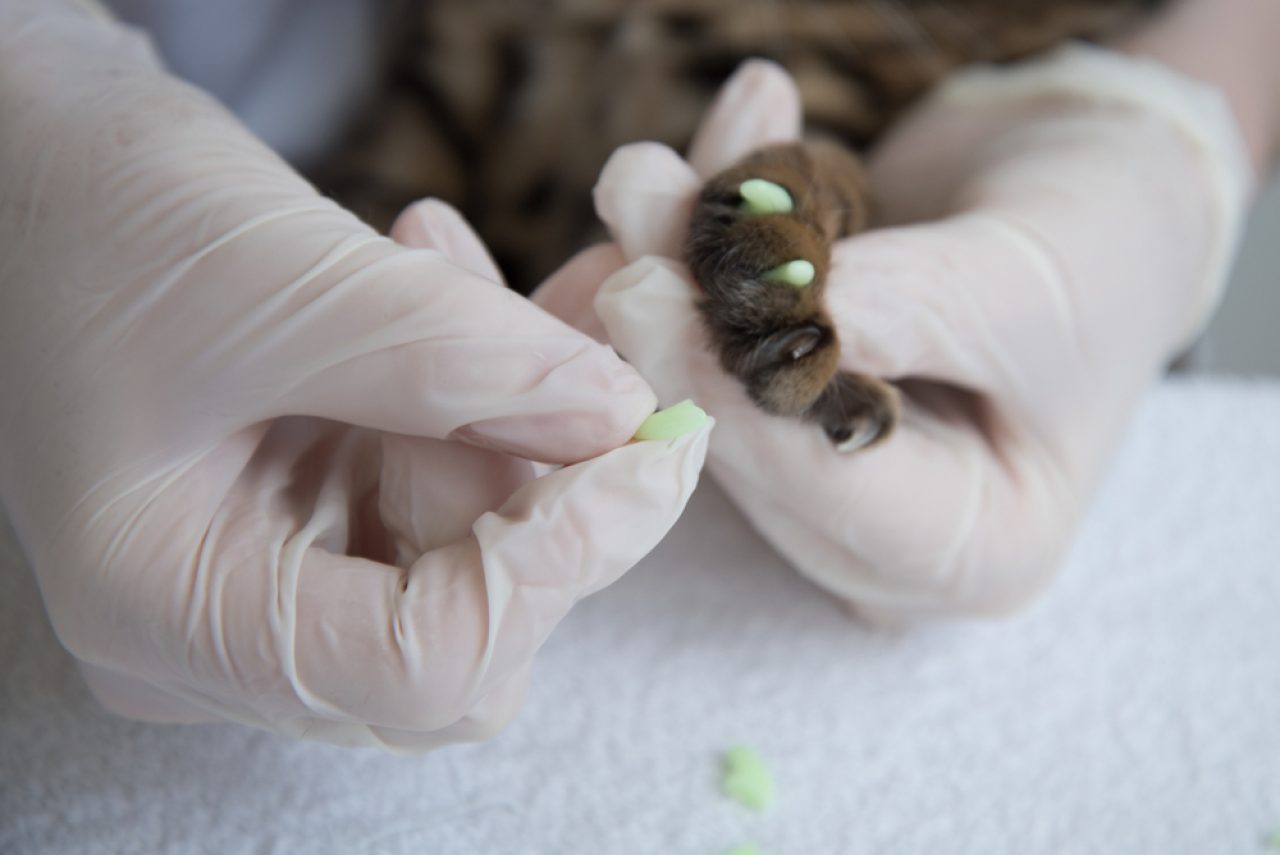
When it comes to applying cat nail caps on your cat’s claws, I’d recommend taking her to the groomer or vet. At least the first time around.
I know that it looks like putting press-on nails, and it seems super easy. But, your feline’s paws are a really sensitive area. So, it’s better that a professional take care of it. However, I’ll try to shortly explain how you can do it as well.
First of all, you have to take care of her claws. Trim them and prepare them, almost as if you’d prepare your natural nails before applying something on top of them.
All nail caps come with glue in a package. So, once your cat’s nails are all set, choose which nail caps will you use. They come in all sizes, so even kittens (only after they turn 3 months) can wear them. Then, put some glue in a nail cap and apply it.
You will need to put in enough glue, and that’s around one-third of the cap, but not too much because it could leak out. The next step is to take your feline’s paw and extend her claws. Some cats will try to fight against this, so it would be better if you have some help. That way you’ll avoid hurting her.
Anyway, once the claw is out, you simply slide that nail cap on and hold it in place for a couple of seconds. Don’t push too far, or hard, because you may hurt her nail bed. When you’re sure it’s attached properly, you can move on to the next one.
After the whole process, your fluff should be able to move normally, but in case you notice something suspicious, don’t hesitate to contact your vet.
And, the last thing that you should know is that you’ll need to repeat this process each four to six months since your cat’s nails will grow and shed, which means they’ll push the caps off as well with the outer nail layer.
What are cat nail caps used for?

The only reason why you can choose to put cat nail caps on your fluff’s claws is that they’re going through the scratching phase. It’s also possible that they have some behavioral issues that can be solved this way, or you’re training her to use a scratching post.
Basically, the main purpose of this product is not to give your cat a fancy manicure, but rather to save everything and everyone from scratch marks. Of course, regular nail trimming can help as well if you don’t want to add something to your furbaby’s paws.
Also, people use them as a more humane and painless substitution for declawing. Some pet parents can’t be patient until their fluff goes through this weird phase and they’d rather solve it right away.
Are cat nail caps uncomfortable for my feline?
Honestly speaking, for some cats, they are uncomfortable. It completely depends on the cat when it comes to the whole process of getting used to wearing nail caps. In the beginning, of course, every fluff will struggle a bit, but with time it becomes normal.
Maybe your furbaby will need more time to get comfortable with them, so just be patient and reward her from time to time with some treats.
Will nail caps hurt my cat?
As you could conclude from some previous answers, no, cat nail caps won’t hurt your feline. It may be a bit weird to see a cat walking around with colorful, or glittery claws, but that’s about it. She can retract her claws normally and extend them when needed. Also, she’ll be able to do her everyday activities perfectly fine.
If you apply the cat nail caps properly, they won’t hurt your fluff, nor cause damage to the nail and nail bed either. These covers are soft and non-toxic, so you don’t have to worry about your cat being poisoned or getting sick for wearing them.
How do I know when is the time to replace nail caps?
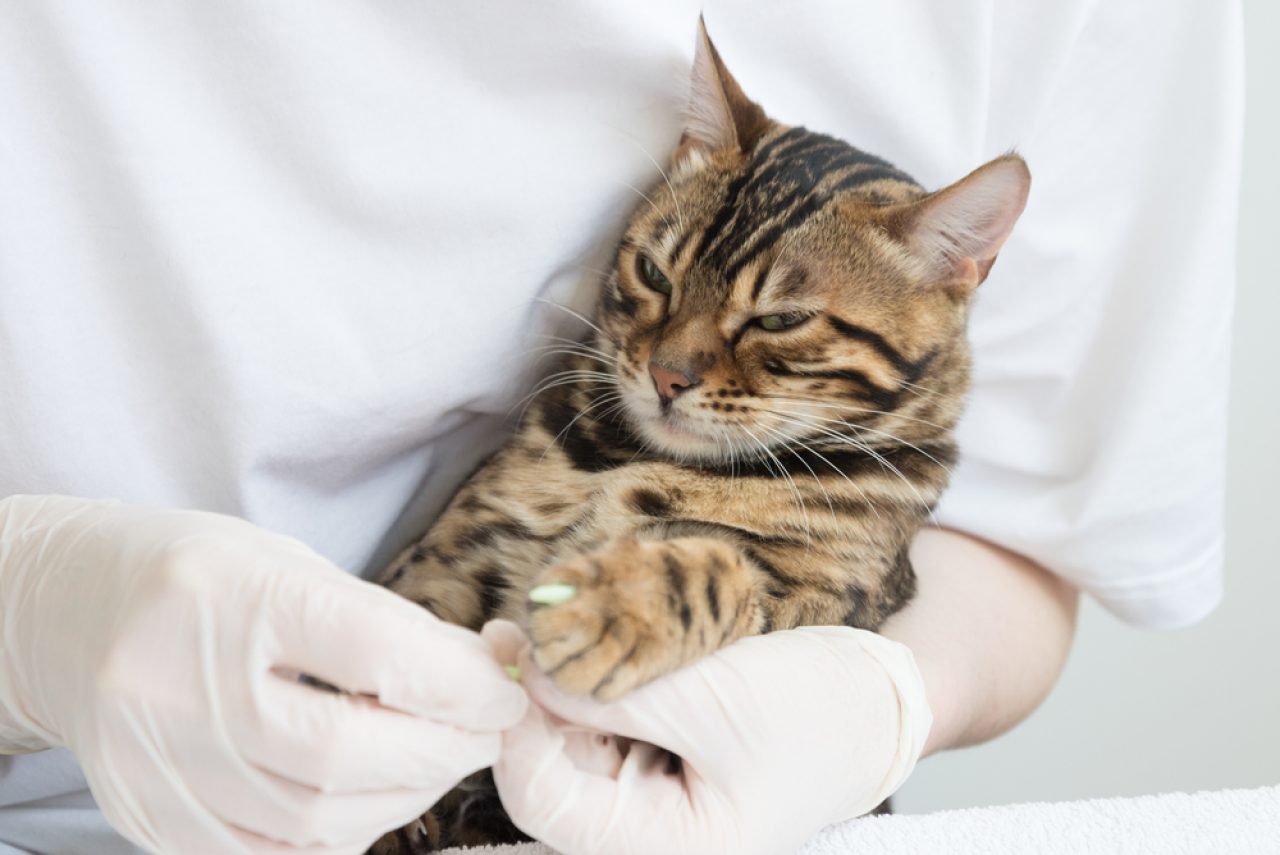
This is something that I’ve mentioned earlier, but let’s explain it thoroughly. Cat’s nails are constantly growing, so they use scratching as a way to shorten them and remove the outer layer. When they do so, the healthier and sharper new nail is left behind.
Therefore, most of the nail caps will fall off on their own. In case some don’t and you know it’s time to replace them, you can use a regular nail clipper and gently remove them. Again, you’ll need someone’s help if you decide to do this on your own.
Can my cat go outside if she’s wearing nail caps?
Unfortunately, no. It’s not recommended for cats to go outside if they have nail caps on. The reason behind this is that they won’t be able to climb properly since they use their sharp claws for a firmer grip. Caps are soft and rounded at the ends, so they won’t help her. She could only hurt herself.
Another thing is that claws are their weapon in the wilderness and when she has these covers, she can’t defend herself. She won’t be able to scratch her enemy, and she could get hurt easily.
Final words
After going through the cat nail caps list of pros and cons, I hope you have made up your mind. I know that the decision may not be easy for some of you, but it’s surely better than declawing. So, if your fluff is scratching you a lot and ruining your living space, put these on until her phase passes.
In the end, I can only emphasize that you let the professionals take care of the covers. It’s easy to apply them, indeed, but don’t do it if you’re not completely sure about the process since their paws are extremely sensitive. Weigh these pros and cons and if you decide so, go get her those colorful nail caps.
